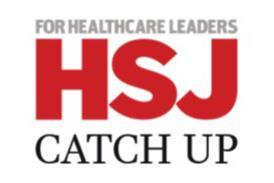It’s only by recognising the diversity of our populations, and ensuring equal access to services and equal health outcomes, that we will reduce health inequalities, writes Shahnaz Ali
As the NHS prepares for the final stage of its biggest ever restructuring at the end of March, there is an equally sizeable risk that the cause of equality and inclusion is being set back years.
The primary reason, in my view, is NHS leaders have failed to make the necessary link between equality and inclusion on the one hand, and health inequalities on the other. It looks like the new leaders are failing too.
‘To be completely inclusive, both commissioners and providers need to have a more finely textured understanding of local demographics’
While the focus nationally on health inequalities and public health competences strongly resonates with our approach in the North West, there remains a problem. Two key factors in the success of the North West’s approach were commissioning services based on the diversity of the local population and building competences related to improving equality and diversity.
The health inequalities approach appears to place socio-economic status as one of the key determinants of health. By focusing on deprived communities, it might tackle some inequalities and reach some vulnerable groups.
But it won’t always get to others, such as LGBT people or disabled people, who may not happen to live in conveniently definable areas or even in deprived communities, but yet still experience unequal access to services and poorer health outcomes.
Moreover, the new approach appears to fix priorities centrally rather than locally. Rather than evidence-based, locally determined commissioning that meets the needs for all, we seem to be back to a centralised, “one size fits all” approach.
Missing the bigger picture
To be completely inclusive, both commissioners and providers need to have a more finely textured understanding of local demographics.
Smart commissioning has to be based on knowing the diverse needs of your communities: whether they are an affluent, mainly white, middle-class suburb, or a deprived inner-city area with a more ethnically diverse population. If commissioning doesn’t take account of the nuances of local needs what is the point of doing it locally?
Smart commissioning means:
- Planning and shaping services to meet local need and manage demand (performance targets).
- Tailoring services to individual needs, ensuring patients receive appropriate, timely care while being treated with dignity and respect (quality targets).
- Ensuring that the care you purchase can be provided more efficiently and effectively (financial targets).
Not only does this kind of smart commissioning meet performance, quality and financial targets, it also makes good business sense by targeting resources where they are most needed (see the case study).
And while ticking all those performance and quality boxes, we will also be tackling health inequalities, for example by ensuring:
- GPs don’t assume lesbian women don’t need cervical screening − they do;
- black and Asian people know that they are at much higher risk of stroke, cardiovascular disease and diabetes than the white population and are helped to reduce that risk;
- accident and emergency units are not struggling with inappropriate attendances because they are getting accessible and targeted information; and
- people with learning disabilities have access to weight management services because they are have a higher risk of obesity.
CCGs − the very bodies that need to get to grips with the links between equality and health inequalities − are under so much pressure to gain authorisation and set up the new organisations that they risk missing the bigger picture. Their commissioning plans seem to be focusing on whole populations, rather than trying to understand the diversity of local communities.
If our leaders truly saw this agenda as business critical they would have made it mandatory for NHS bodies to use the NHS equality delivery system (EDS), a tool that links health inequalities and equalities, and also measures outcomes.
The precursor to the EDS, the equality performance improvement toolkit (EPIT), was developed in the North West, the first ever such system in the NHS.
It had real teeth because we made it mandatory and developed and tested it across the region in more than 60 organisations.
Snowcapped organisations
Providers and commissioners quickly learned the value of using such a system, and North West organisations migrated from EPIT to EDS without any question. We now have the highest number of organisations participating in the EDS in the country.
There has been a significant loss of equality staff since 2010. Despite having a deep understanding of the inequality/health inequality links, such staff are seen as dispensable. Of course, this has happened in every reorganisation, but this time around it has been significantly worse.
Also, the lack of time and priority being given to equality analyses on new policies and services raises the risk not only of potential discrimination and exclusion, but also legal challenges down the line.
The equality analysis carried out on recruitment patterns to the NHS Commissioning Board demonstrates the value of such an exercise. In November 2012, an equality analysis of the current staff profile of the NHS Commissioning Board showed that of applications to very senior management posts:
- 74 per cent of applications were from white applicants, and of those 93 per cent were appointed (greater than the figure for the population as a whole); and
- 15 per cent were from black and ethnic minority applicants, and of those 4 per cent were appointed (less than half compared with the percentage in the general population).
The new NHS can reduce health inequality gaps by having systematic and comprehensive data and intelligence gathering alongside staff training in how to collect sensitive data; and being able to disaggregate this data meaningfully with appropriate IT systems − a real weak spot for joint strategic needs assessments.
To tackle the longstanding problem of a “snowcapped” organisation, the lack of diversity among senior leadership needs to remedied.
Since 2008, we have made significant inroads into these problems resulting in a culture change across the North West, with a focus on, and demonstrable improvements in, objectively measurable equality outcomes, therefore reducing health inequalities.
Case study: how drilling down into the data is good for equalities and also for business
Routine screening for breast cancer achieves an overall national rate of around 70 percent but this relatively high figure masks large disparities among different groups.
The University Hospital of South Manchester, a regional breast screening centre, knew from the literature and experience locally that Asian women were half as likely to attend for routine screening but much more at risk of developing breast cancer – more aggressive forms and at an earlier age.
Once in treatment, their experience was also likely to be more negative, because of communication difficulties with staff.
NHS North West’s equality team worked in partnership with the hospital to set up a cultural communications training programme, provided translated information leaflets and funded a support group for Asian women who would help spread the word to family and friends about the importance of screening.
This will help save the NHS from costly interventions further down the line while also helping to improve patient experience.
Shahnaz Ali is director for equality, inclusion and human rights at NHS North West



























9 Readers' comments